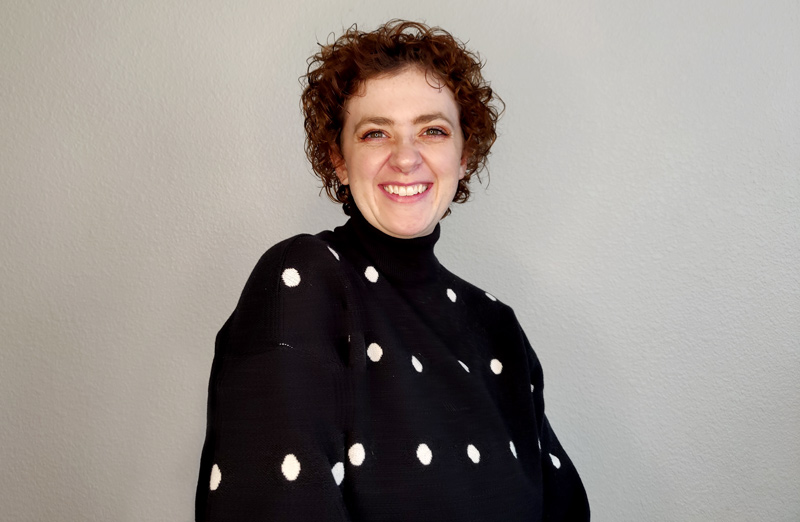It is becoming increasingly understood that there are marked differences in autism between genders. This has led to people assigned female at birth (AFAB) to being diagnosed in adolescence or adulthood at a higher rate compared to people assigned male at birth (AMAB) (Wood-Downie et al., 2020). I was diagnosed autistic in November 2021 at twenty-six years old. It came after being misdiagnosed with type two bipolar disorder in 2015 and being “treated” for that on varying medications with no improvement. I started to suspect I was misdiagnosed in 2019 when I did not have any “hypomanic episodes” despite stopping all medications due to contraindications with pregnancy. It was not until mid-2021 that my therapist and I began exploring alternative diagnoses. Over five months, she evaluated me for autism until finally diagnosing me.

Britt Boylan (They/Them)
This did not come as a surprise to my family or me, but I was surprised to hear that my family suspected I was autistic but chose not to have me evaluated when I was younger. Due to this, I developed intense masking (a.k.a. camouflaging) skills that allowed me to “fit in” the best I could, but forced me to internalize all my struggles related to autism. It has taken over a year, and a neurodivergency-affirming therapist, to begin the “unmasking process.” This has involved: understanding my mask, unlearning the parts that do not serve me, and learning how to live authentically.
A growing body of research suggests negative consequences from long-term camouflaging (Wood-Downie et al., 2020). It is a “risk-marker for suicidality” and camouflaging makes recognizing autism in AFAB people much more difficult than AMAB people (Wood-Downie et al., 2020, p. 1354). Another issue is the diagnostic criteria for autism is not inclusive of the ways AFAB people express their autistic traits (Hull et al., 2020). There are theories as to why autistic AFAB people are missed in childhood or misdiagnosed and that includes social factors and camouflaging (Hull et al., 2020). Depending on the society, there are different expectations of girls versus boys. Self-regulation, for example, can be a challenge for autistic people, but especially for AFAB people who have the strong tendency to camouflage and internalize, which again is correlated with poor mental health outcomes later in life (Wood-Downie et al., 2020).
As discussed in Lockwood-Estrin’s (2021) article, there are several barriers to AFAB people receiving an autism diagnosis, one of which being behavioral problems. They argue that “…females diagnosed with ASD needing additional behavioral problems to improve their chances of receiving a diagnosis,” (Lockwood-Estrin et al., 2021, p. 456). The same behavioral problems between young AFAB and AMAB people are not being seen because there are different societal expectations of each group. Lockwood-Estrin’s article also states that young boys were often more “aggressive and hyperactive” compared to young girls who “exhibit staring and seizure-like activities” (Lockwood-Estrin et al., 2021, p. 456). Ironically, the Center for Disease Control and Prevention (2022) lists “hyper- or hypoactivity to sensory input…” as a diagnostic criterion for autism (Center for Disease Control and Prevention, 2022). The hypoactivity aspect is largely ignored as it is common in AFAB presentations (Lockwood-Estrin et al., 2021).
It gives me hope that the diagnostic criteria for autism will evolve to be more inclusive of AFAB people or anyone who does not present in a “typical” way. I also hope that as the research evolves, outdated stereotypes will continue to diminish especially amongst clinicians. However, future research is needed to know how much camouflaging truly effects AFAB, late-diagnosed autistic individuals (Hull et al., 2020). Clinicians need to be updated on findings as well, because there is a growing body of literature to suggest that autistics will camouflage during evaluations, which can lead to missed or misdiagnoses (Hull et al., 2020). The current literature suggests that there are real barriers to AFAB people receiving needed diagnoses which leads to poorer mental health outcomes. As clinicians, we can mitigate this by approaching clients through a developmental, multicultural lens that allows them to advocate for themselves and live authentically.
Britt Boylan (They/Them) is a student pursuing their M.A. in Mindfulness-Based Transpersonal Counseling at Naropa University. They have a passion for research and learning and they hope that the research surrounding autism in AFAB people will continue to evolve. Britt can be reached by email at brittany.boylan@naropa.edu.
References
Center for Disease Control and Prevention. (2022, November 2). Diagnostic criteria for 299.00 autism spectrum disorder. https://www.cdc.gov/ncbddd/autism/hcp-dsm.html
Hull, L., Petrides, K. V., & Mandy, W. (2020). The female autism phenotype and camouflaging: A narrative review. Review Journal of Autism and Developmental Disorders, 7, 306-317.
Lockwood-Estrin, G., Milner, V., Spain, D., Happe, F., & Colvert, E. (2021). Barriers to autism spectrum disorder diagnosis for young women and girls: A system review. Review Journal of Autism and Developmental Disorders, 8, 454-470. https://doi.org/10.1007/s40489-020-00225-8
Wood-Downie, H., Wond, B., Kovshoff, H., Mandy, W., Hull, L., & Hadwin, J. A. (2020). Sex/gender differences in camouflaging in children and adolescents with autism. Journal of Autism and Developmental Disorders, 51, 1353-1364. https://doi.org/10.1007/s10802-020-04615-z




